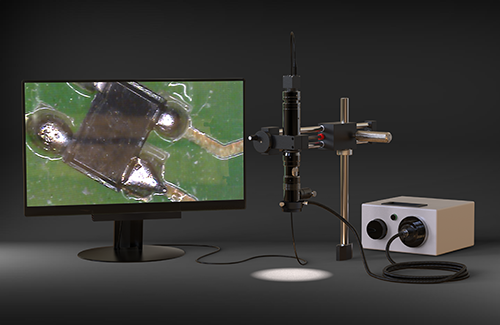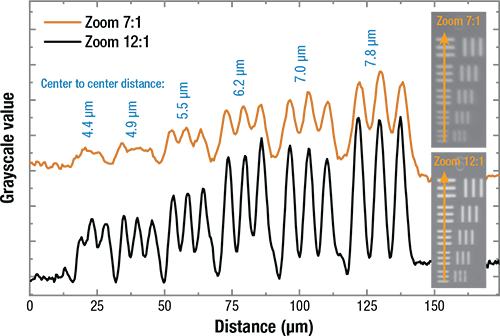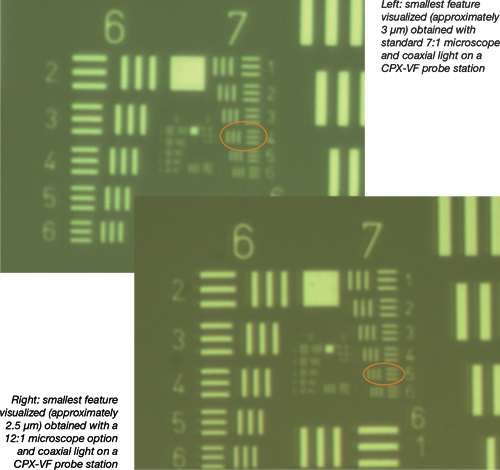Vision system
The probe station’s vision system is critical for distinguishing characteristics of the sample and properly landing probes. The standard vision system implements 7:1 optics with a high sensitivity, high definition camera, and high-resolution monitor. The HD camera is specifically chosen for low light sensitivity to minimize the lighting required for high image quality. The choice of an appropriate lighting type is especially important for sample visualization because it strongly influences the behavior of the vision system. Therefore, Lake Shore includes both coaxial light and ring light illumination standard with the vision system.
The 1951 USAF glass slide resolution target images shown demonstrate the smallest feature resolved for both the standard and optional vision system. Optical analysis of the images shows the improved resolving power of the optional 12:1 vision system. Based on the optical analysis, the smallest feature that can be visualized in each probe station model is summarized in the table. The FWPX probe station has a longer working distance than the other stations, requiring an alternative lens in the optics.



| Probe station model | Standard 7:1 smallest visualized feature | Optional 12:1 smallest visualized feature |
| TTPX/PS-100 | 2.8 µm | <2.5 µm |
| CPX | 2.8 µm | <2.5 µm |
| CPX-VF | 2.8 µm | <2.5 µm |
| EMPX-H2 | 2.8 µm | <2.5 µm |
| FWPX | 6.2 µm | — |
| CRX-6.5K | 2.8 µm | <2.5 µm |
| CRX-4K | 2.8 µm | <2.5 µm |
| CRX-VF | 2.8 µm | <2.5 µm |
| CRX-EM-HF | 2.8 µm | <2.5 µm |

